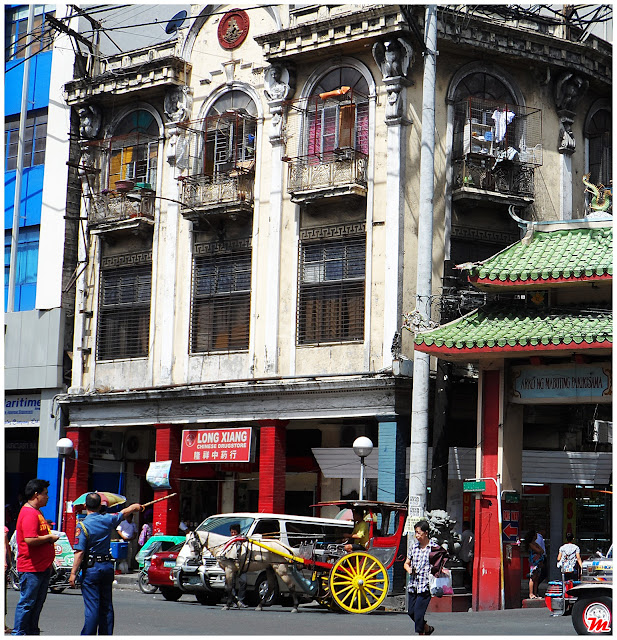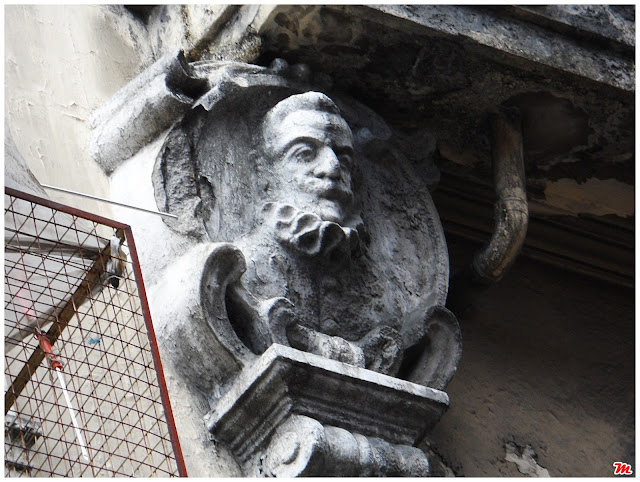I couldn't just forget this TV show that I used to watch when I was a small kid. I could still remember how I sit in front of the old cathode ray television with some chichiria (salted chips) and a bottle of soda on the side. For sure the kids of the late 80’s and early to mid 90’s could relate to this classic children’s series that was aired to educate kids about Philippine History. The name of the program is “Bayani” (Heroes).
The series talks about the adventures and misadventure of these two ordinary elementary school student named Noli and Aya as they travel back in time to witness some documented historic events specially the situation during the Spanish regime where the Katipuneros and almost all the country’s patriotic heroes have existed.
If travelling back in time like this is real and really exists, I would have might paid for a ride to bring me back to the past. And if I would be given a chance to choose any destination, I want to see this place back to life—
 |
| Plaza Goiti 1920s- Monte de Piedad bank on the left |
 |
| Sta Cruz Plaza, 1961 |
As I take a look at some pictures of Manila way back in the 1920's, I realized how lovely this city was. Very classic, grandiose and clean.
To partially fulfill this impossible dream of time travel, I took time to walk just around here at Sta. Cruz Plaza to somehow relive the lost feeling and memories of the past. Like what I did in Silay City last month, I tried to search for the city's hidden and long lost treasures.
Frustratingly, I might think that some of these were now being lost forever. Physically, they are still in their original location but their beauty was already washed out by the Philippines' ever-changing climate, vanished by time and damaged by the endless urge of the people to urbanize.
During my short walk here, my imagination never stopped. I couldn't help myself asking same old question:
"What happened? Why?"
Here are some changes that I have observed around Sta. Cruz area. This scenario has already answered my question.
While I was taking a picture of this building, a lady just threw some sarcasm as she passed by behind me.
As I point my lens up so I can capture the structure's detailed design, I heard her say: "Ay, anong meron?" ("What the heck is up in there?"), in a tone I really disliked.
Obviously, she doesn't know why I was so interested with this building. As much as I want to grab her bicep, speak to her face to face and tell her what really this building is, I just can't do it.
I want to tell her frankly that this old building that she just have ignored is the Monte De Piedad Savings Bank. It is considered as the first savings bank here in the Philippines. It simply means Mountain of Mercy, which is really true since this bank was established to help the poor by giving them collateral-backed loans.
This structure was built on June 24 1887, and fortunately, this building is still standing firmly near Chinatown today.
Unfortunately, this building is already considered abandoned. As what the pictures show, this bank that helped the poor before now needs help.
I was saddened to see that this valuable piece of Neo-Classical architecture is now a great dwelling place for rats, stray cats and some settlers who might not own a house. Some of its windows and doors were already broken, being neglected and were never maintained or replaced. The colors of its painted walls have already vanished.
Again, here I am asking myself: "What happened? Why?"
A Building with No Name
I felt the same way with this building here in Carriedo (just beside Carriedo LRT Station). I tried to search for the building's name but I just failed to come up with an answer.
Like the Ruins in Talisay, Negros, this building has an amazing architectural design too. I love it's Neo-Italian design that we could no longer observe to most of the modern buildings today.
But knowing that it's now abandoned and neglected, I felt a hard grip on my heart again.
I caught myself asking this same old question again: "What happened? Why?"
The Carriedo Fountain
My walk here at Sta. Cruz didn't end frustratingly though because of these old neglected buildings. Upon seeing the Carriedo Fountain in the middle of Sta. Cruz Plaza, I realized that there is still a brighter side of Manila.
 |
| The Carriedo Fountain and Monte De Piedad on the side |
This original classic masterpiece was constructed in 1882 to recognize the effort and kindness of philanthropist and Spanish engineer, Don Francisco Carriedo y Perredo for introducing the first water system here in Manila. Though the original fountain is located near Legarda, Manila, a replica was built later here in Sta. Cruz by national artist, Napoleon Abueva to commemorate the legacy of considered Manila's greatest benefactor, Don Francisco Carriedo.
Conclusion
We have traveled so far and almost everything around us have gone through different stages of change. We could not recognize these changes if we are unable to recognize them consciously. And so, I decided to write this blog post with the firm intention of awakening my sleeping countrymen about the truth on Manila.
The truth is—Manila is a rich city. It has a very rich history and cultural heritage but we just keep on forgetting that we really “own” these things. We used to dwell on our present condition and we often forget our past. Which for me, forgetting the past by neglecting our heritage like these old buildings, simply means forgetting who and what we really are.
When I saw these buildings in Sta. Cruz, it reminded me of some old heritage buildings in Europe. I appreciate how the people there care, protect and maintain them. However, I was disheartened when some of ours, or might have been most of ours here, were neglected, ignored or worse, were demolished.
We own Manila; thus, we should take good care of it too. I hope and I pray that it’s not yet late. These heritage sites—officially or unofficially proclaimed, deserve an equal right to be maintained and preserved. I would be happy if we could progressively bring these buildings back to life. Let’s continue reviving Old Manila. Let’s give another chance to the next generation to see our history…letting them see who and what really we are.













No comments:
Post a Comment